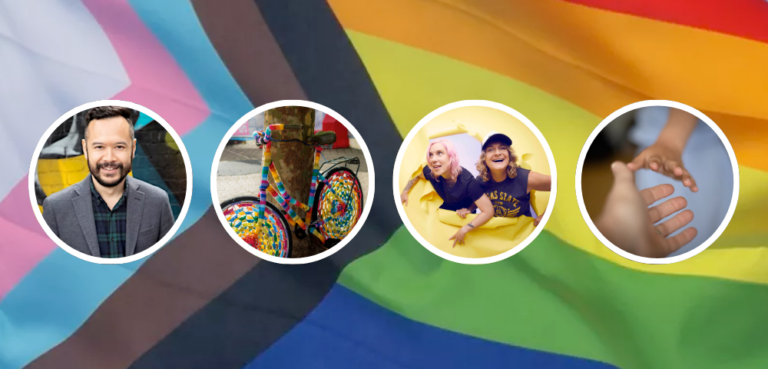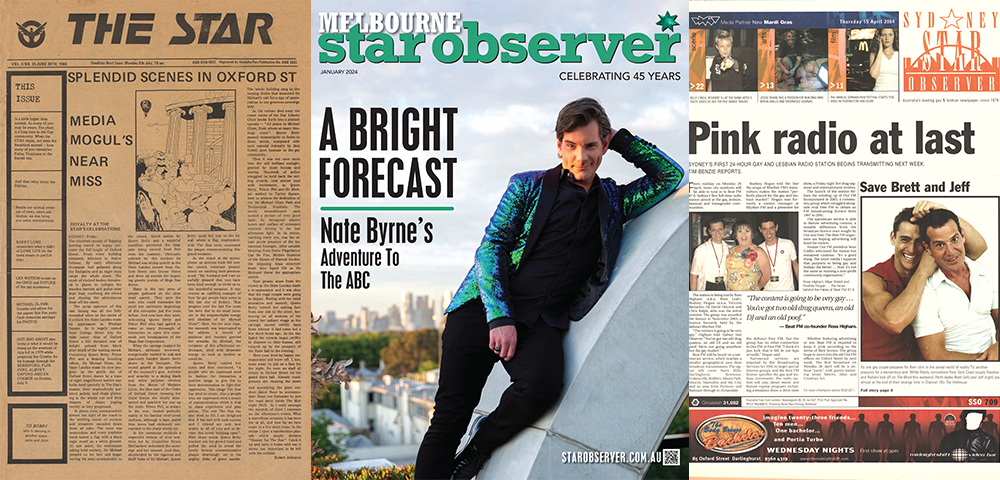
Give It To Me Bi: A New Bisexual Space in Star Observer

After 46 years of publishing, Star Observer has welcomed its first column dedicated exclusively to the Bi+ community: Give It To Me Bi. And about time, right?
For decades, bisexual voices have been sidelined, misunderstood, or simply ignored. But now, here’s a space carved out just for them, for us—a place to celebrate, challenge, and amplify Bi+ stories.
Thanks, Star. We love you!
Welcome to Give it To Me Bi. It’s brought to you by us, Chad Barnier and Steve Spencer, co-hosts of Give It To Me Bi, a podcast that dives into the joys and struggles of bisexuality.

We wanted to create something that felt real. There’s so much nuance in the Bi+ experience, and it deserves to be explored—not watered down or shoved into stereotypes.
Who is Give It To Me Bi for?
Honestly, it’s for everyone in the Bi+ community—and those who care about us.
It’s for bi men who are tired of being erased. Bi women who feel dismissed. Bi non-binary and trans folks whose experiences are so often ignored. It’s for bi parents juggling family life and bi folks navigating relationships—whether they’re with straight partners, gay partners, both, or neither.
This column is for anyone who’s ever had their identity questioned, been told to “pick a side,” or rolled their eyes at yet another “but isn’t it just a phase?” comment.
It’s for anyone who believes bisexuality is worthy of celebration, exploration, and visibility.
Smashing myths and building community
It’s no secret that bisexuality is surrounded by myths. From being dismissed as “just gay and can’t admit it” to being labelled “confused” or “experimenting,” these tired clichés aren’t just annoying—they cause real harm.
Stigma and erasure take a toll, especially on mental health.
Studies show bisexual individuals face some of the highest rates of mental health challenges in the LGBTQIA+ community. When your identity is constantly questioned, it’s hard not to internalise that doubt.
But here’s where community steps in. This column, much like our podcast, exists to amplify Bi+ voices and build solidarity. The more we share our stories, the more we chip away at these myths.
Bisexuality isn’t about halves or indecision—it’s about being whole.
What can you expect from Give it To Me Bi?
In future months, Give It To Me Bi will explore the rich legacy of Bi+ advocacy, the fight for representation in queer spaces, and the mental health struggles linked to biphobia and erasure. Relationships of all kinds—same-gender, different-gender, bi4bi, polyamorous, or monogamous—will feature prominently, as will the unique ways Bi+ individuals navigate sexual health.
We’ll highlight the intersectional experiences of Bi+ people of colour, non-binary and trans individuals, neurodiverse folks, and those from religious backgrounds. From coming out and self-acceptance to building Bi+ spaces and uncovering local histories, we aim to shine a light on what it means to be Bi+ today.
Whether it’s busting myths like “bi now, gay later,” finding solidarity across the queer community, or asking why the bisexual flag still doesn’t have its own emoji, this column is here to celebrate, challenge, and connect.
We’re not here to rant or complain—that’s not our style. We’re here to change hearts and minds.
So, what do you think? Isn’t it time the Bi+ community had its moment in the spotlight?
View this post on Instagram









